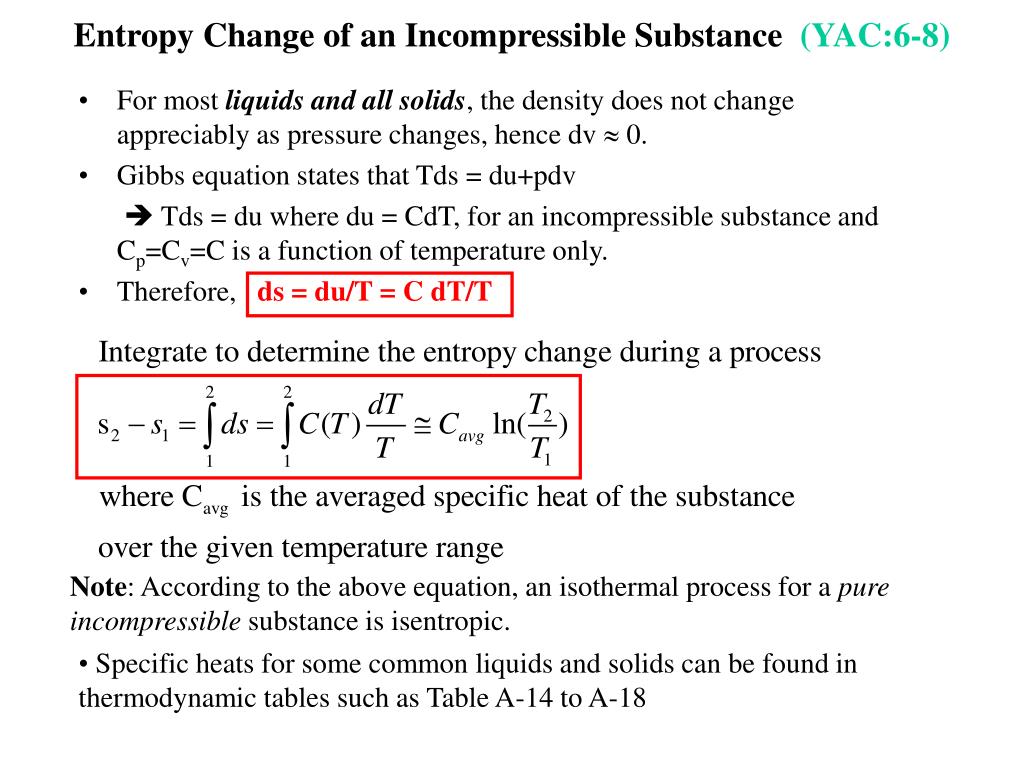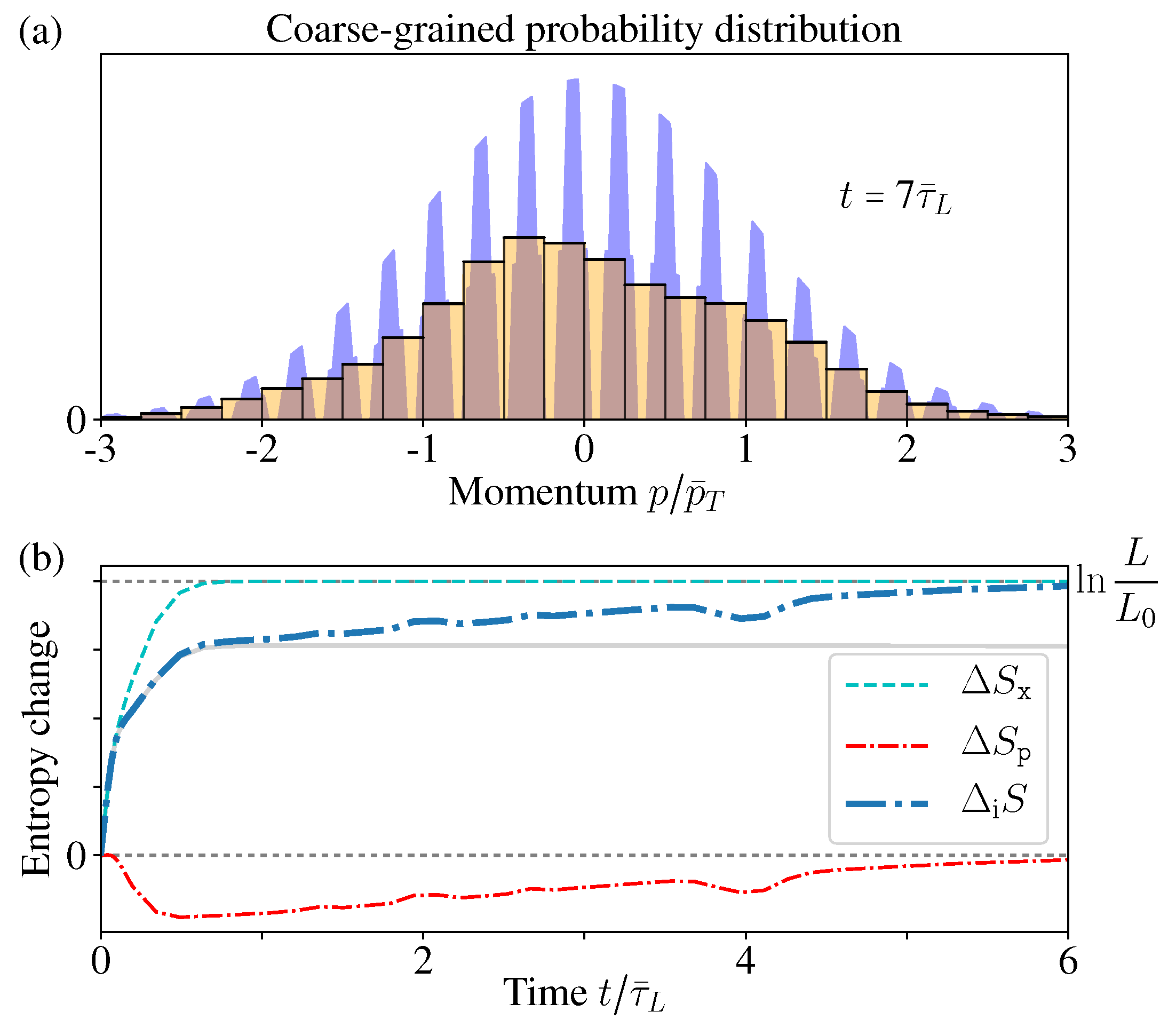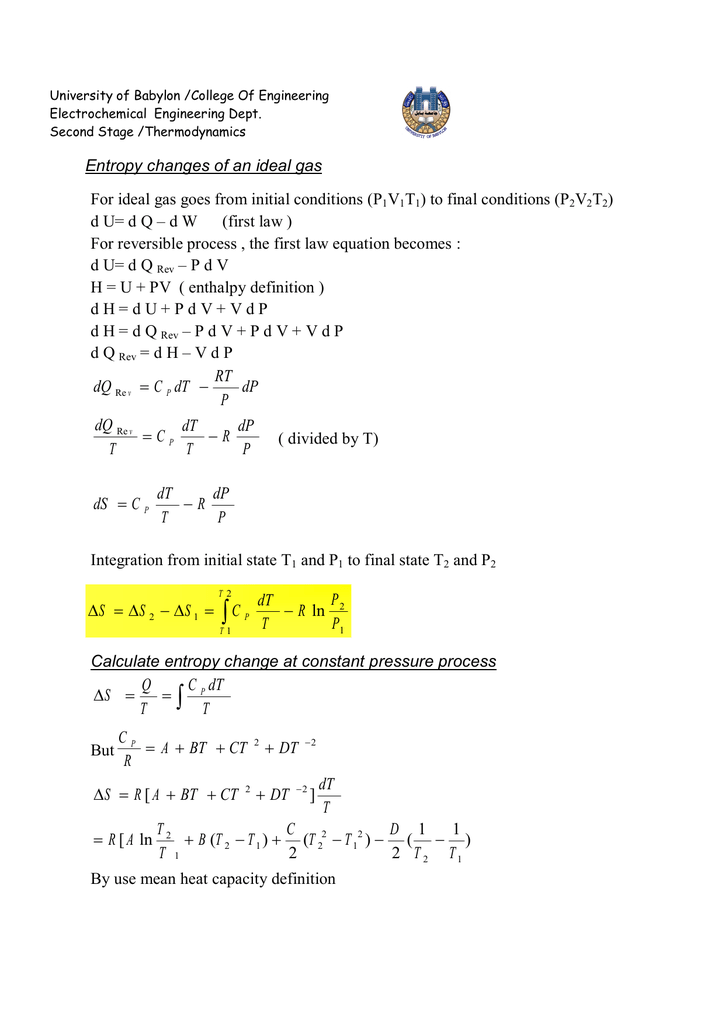
The general case for an open systemĬase 1: For more than one inlet and one exit of control volumeįor a flow process as shown in Figure 16.6, the entropy rate balance gives The second law of thermodynamics can be applied to an open system (C.V.) by a procedure similar to the application of First law for open system. SECOND LAW OF THERMODYNAMICS FOR A CONTROL VOLUME (C.V.) Thermal efficiency of the engine working on cycle =ġ6.4. Or Net work done by the system = Net heat transfer by the system = 1Q 2 + 3Q 4

Since the system undergoes a cycle, the net heat transfer should be equal to the net work done by the system. The amount of heat transferred by the working substance to the reservoir at temperature ‘T L’,ģQ 4 = T 3 (S 4 – S 3) = T 3 (S 1 – S 2). The amount of heat transferred by the reservoir at temperature ‘T H’ to the working substance, It works on four reversible processes as shown on T-S diagram in Fig. Let a heat engine operate on a Carnot cycle as discussed in ‘Fig. Change in Entropy for an Equal Enthalpy Processįrom Equation (16.2), we have TdS = dH - Vdpīut dH = 0 therefore Tds = 0 - Vdp = - Vdp Using this in the above equation, we getįrom Equation (16.1), we have TdS = dU + pdVīut dU = 0 therefore TdS = 0 + pdV = pdVġ6.2.7.

Therefore a reversible adiabatic process is an isentropic processįor an irreversible adiabatic process, for unit mass, we have,īut for a gas. 16.5):įor reversible adiabatic process, we have, Reversible and an irreversible adiabatic process (isentropic process)(Fig. Constant temperature process (Isothermal process) (Fig. Constant pressure process (Isobaric process) (Fig. Constant volume process (Isochoric process) (Fig. Polytropic processes on P-v and T-s diagrams.ġ6.2.1.

The entropy change in these processes is determined as follows.įig. Various processes are shown on p-v and T-s diagrams in Fig. ENTROPY CHANGE IN A PROCESS FOR IDEAL GAS:


 0 kommentar(er)
0 kommentar(er)
